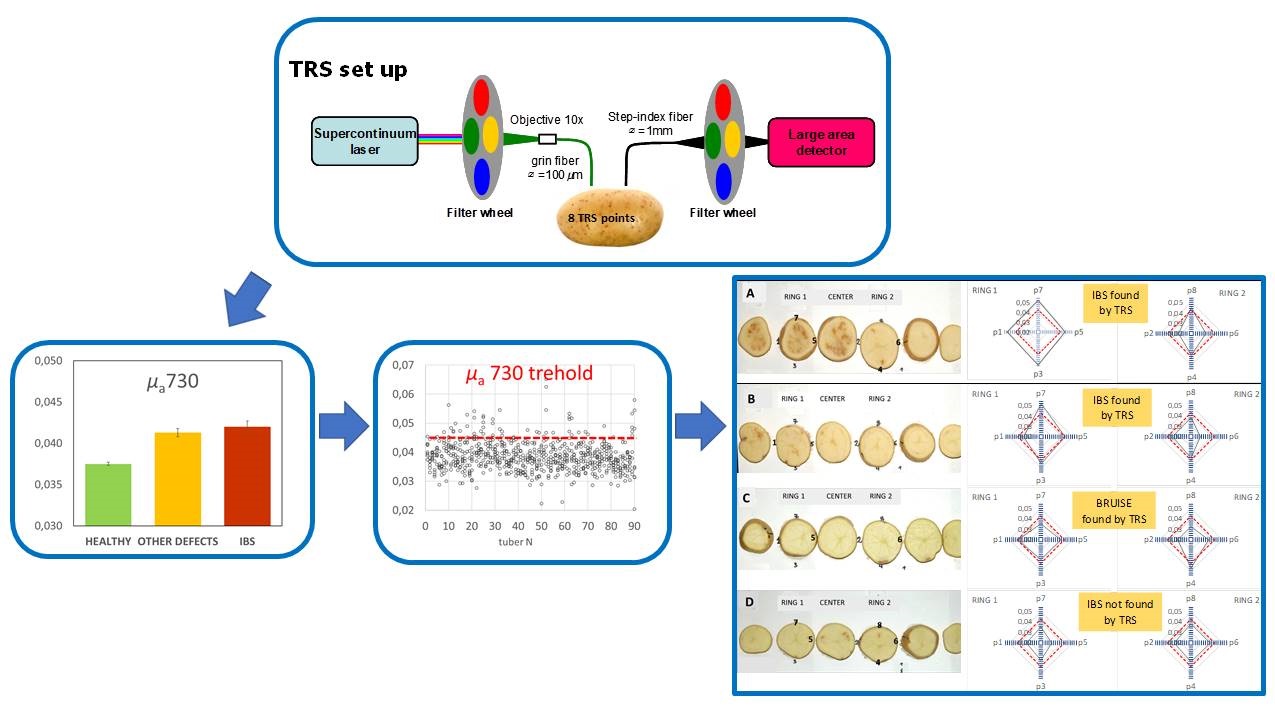Non-destructive detection of potato tubers internal defects: critical insight on the use of time-resolved spectroscopy

Published 2020-05-04
Keywords
- absorption coefficient,
- bruise,
- internal brown spot,
- Solanum tuberosum cv. El Beida,
- TRS
How to Cite
Abstract
Aiming at investigating the feasibility of time-resolved reflectance spectroscopy (TRS) for the non-destructive detection of internal brown spot (IBS) and other defects in ‘El Beida’ potatoes, 90 tubers were measured in 8 points by TRS for the absorption coefficient at 730 nm (µa730) and then transversally cut open for recording presence and position of internal defects and IBS severity. The µa730 was lower in healthy tissue than in defected ones and increased with increasing IBS severity with no difference between healthy and slightly IBS tissues. Tubers having at least one out of the eight µa730 measures ≥ 0.04262 cm-1 were considered “defected”. Therefore, TRS tubers classification performance were: defected, 73.5%; healthy, 45.5%; slightly IBS, 57.1%; moderate IBS, 60%; and severe IBS, 100% of the cases. Misclassification could be due to the high variability in flesh color of ‘El Beida’ potatoes, as some healthy tubers showed L*, b* and C* color parameters very similar to that of defected ones, especially when IBS severity was slight or moderate, resulting in µa730 values not significantly different between healthy and IBS tissues. The feasibility of TRS in detecting internal disorders in potatoes must be investigated in other susceptible cultivar to see if flesh color can represent a real problem in the detection of defects linked to browning development.





